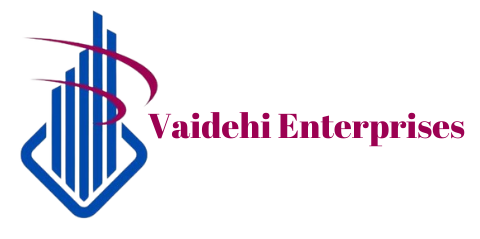What Are the Best Interior Design Strategies for Private Offices in Co-Working Spaces
What Are the Best Interior Design Strategies for Private Offices in Co-Working Spaces
As co-working spaces continue to rise in popularity, the design of private offices within these environments has become increasingly important. A well-designed private office can enhance productivity, foster creativity, and provide a comfortable atmosphere for professionals. This blog explores the best interior design strategies for private offices in co-working spaces, focusing on flexibility, ergonomics, aesthetic appeal, technology integration, and personalization.

- Flexibility: Adapting to Diverse Work Styles
Flexibility is crucial in co-working spaces, as professionals often have varying work styles and needs. Designing private offices that can easily adapt to these requirements enhances functionality and comfort.
Key Features of Flexible Design
- Modular Furniture: Use modular desks and chairs that can be easily rearranged or reconfigured to suit different tasks or group sizes. This allows occupants to create an environment that best fits their current work needs.
- Movable Partitions: Incorporate movable walls or partitions that can create separate areas within the office or open up the space for collaboration when needed.
- Multi-functional Spaces: Design areas that can serve multiple purposes, such as a meeting space that can transform into a lounge area after hours.
Benefits of Flexibility
- Adaptability: Flexible designs cater to various work styles, from focused individual tasks to collaborative brainstorming sessions.
- Maximized Space Utilization: Efficient use of space allows for more functionality without compromising comfort or aesthetics.
- Ergonomics: Prioritizing Comfort and Health
Ergonomic design is essential for promoting the well-being of individuals working in private offices. By prioritizing comfort, you can enhance productivity and reduce the risk of strain or injury.

Key Ergonomic Considerations
- Adjustable Furniture: Invest in height-adjustable desks and ergonomic chairs that support good posture. This allows users to alternate between sitting and standing throughout the day.
- Proper Desk Setup: Ensure that monitors are at eye level and keyboards are positioned to minimize strain on wrists. Accessories like monitor stands and wrist supports can enhance comfort.
- Ample Space: Design offices with enough space to move around comfortably, preventing feelings of confinement.
Benefits of Ergonomics
- Increased Productivity: Comfortable work environments lead to improved focus and efficiency.
- Healthier Work Habits: Ergonomic designs encourage better posture and reduce the likelihood of musculoskeletal issues.
- Aesthetic Appeal: Creating an Inviting Atmosphere
The aesthetic appeal of a private office significantly impacts mood and productivity. Thoughtful design choices can create a visually stimulating environment that inspires creativity.
Key Aesthetic Elements
- Color Schemes: Choose color palettes that reflect the brand identity while promoting productivity. Calming colors like blues and greens can enhance focus, while vibrant accents can stimulate creativity.
- Natural Materials: Incorporate wood, stone, and other natural materials to add warmth and texture to the space. These elements create a welcoming atmosphere that feels less sterile than traditional office environments.
- Art and Decor: Use artwork, plants, and decorative items to personalize the space. These elements can reflect personal interests or company values, fostering a sense of belonging.
Benefits of Aesthetic Appeal
- Enhanced Mood: Visually pleasing environments contribute to positive emotions, making work more enjoyable.
- Brand Representation: A well-designed aesthetic reinforces brand identity and values, leaving a lasting impression on clients and visitors.
- Technology Integration: Supporting Modern Work Needs
In today’s digital age, seamless technology integration is essential for enhancing productivity in private offices within co-working spaces.
Key Technology Features
- Smart Lighting Solutions: Implement smart lighting systems that adjust based on natural light levels or user preferences. Adjustable lighting enhances focus during work hours while creating a cozy atmosphere after hours.
- High-Speed Internet Access: Ensure reliable Wi-Fi connectivity throughout the office. Consider incorporating wired connections for devices requiring stable connections.
- Integrated Charging Stations: Provide accessible charging stations for devices to keep technology powered throughout the day without cluttering workspaces with cords.
Benefits of Technology Integration
- Increased Efficiency: Streamlined technology enhances workflow by reducing disruptions caused by technical issues.
- Enhanced Collaboration: Integrated tools such as video conferencing systems facilitate communication with remote team members or clients.
- Personalization: Reflecting Individual Identity
Personalization is key to creating a comfortable environment where individuals feel at home while working in co-working spaces.
Key Personalization Strategies
- Customizable Spaces: Allow occupants to personalize their offices with decor items, artwork, or furniture arrangements that reflect their style and preferences.
- Incorporate Personal Items: Encourage individuals to bring personal items such as photos or mementos that create emotional connections within their workspace.
- Flexible Branding Options: For businesses occupying private offices, consider incorporating branding elements like logos or color schemes that reflect their identity.
Benefits of Personalization
- Increased Comfort: Personalized spaces foster a sense of ownership, making individuals feel more comfortable and engaged in their work.
- Enhanced Creativity: Environments that reflect personal tastes often inspire creativity and innovation.
Conclusion
Designing private offices within co-working spaces requires a thoughtful approach that balances flexibility, ergonomics, aesthetic appeal, technology integration, and personalization. By implementing these strategies, businesses can create inviting environments that enhance productivity while catering to diverse work styles. As co-working continues to evolve, prioritizing effective interior design will be key to fostering positive experiences for professionals seeking dynamic workspaces. Ultimately, an investment in well-designed private offices will lead to happier employees and improved overall performance in co-working environments.


